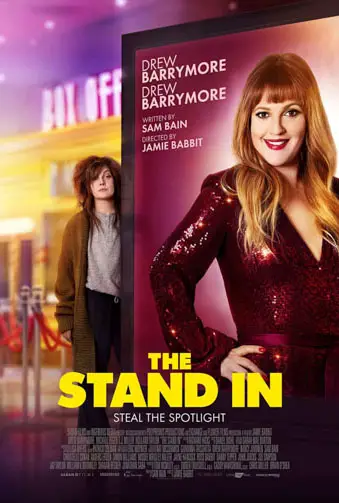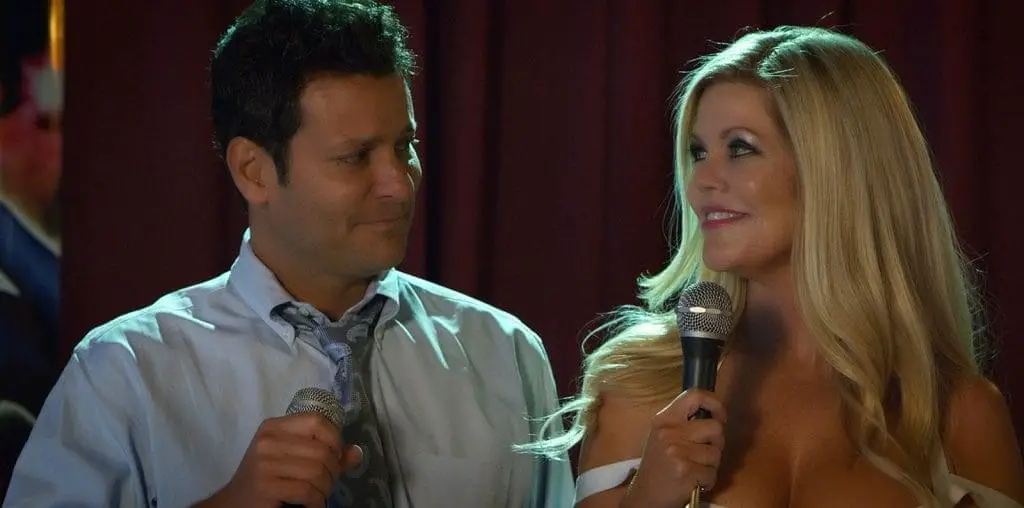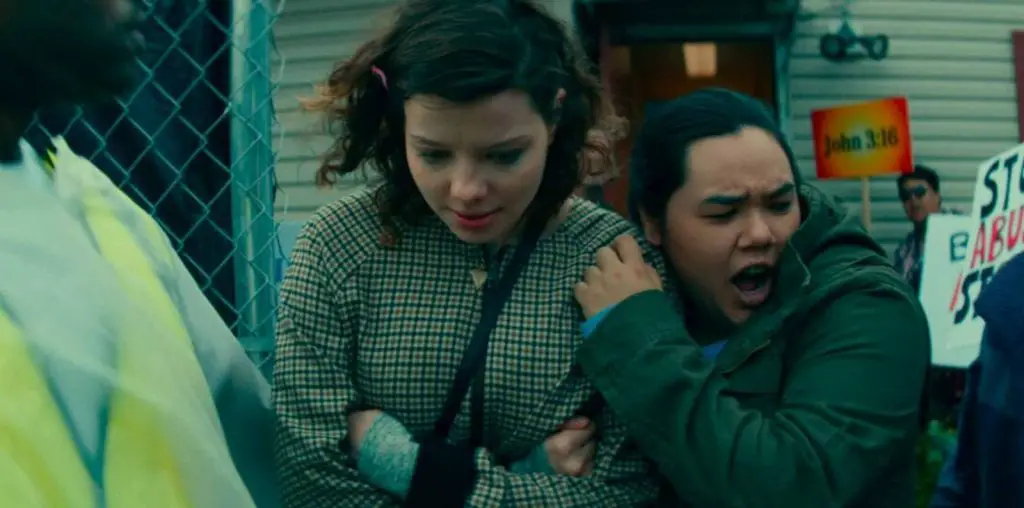
I say it time and again, “If you’re going to tell a story that’s been told many times before, freshen it up.” If you do something different and you’ll stand out. That’s what we have with Jamie Babbit’s The Stand In, starring Drew Barrymore. The “original” story dates back to Mark Twain’s The Prince and the Pauper with Barrymore playing the two lead roles—not so fresh so far, but hold on.
Famed actress Candy Black (Drew Barrymore) is on the waning end of her career. She rose to fame by falling down and doing physical slapstick comedy with a kitschy catch phase to boot—”Hit me where it hurts!” Candy has just been fired from her last role after falling apart on set and permanently injuring her co-star (Ellie Kemper). As Candy’s downward spiral goes in a typical cinematic direction, her stand-in (Drew Barrymore) is now left without a job with no prospects of furthering her acting career (understandably because she’s not a good actress).

“She proceeds to go on an amazing apology tour and rather enjoys being in the spotlight…”
Later, Candy finds herself needing to go to rehab or face prison time. It is essential to know that Candy has given up on acting altogether, primarily due to its toxic environment. She persuades her stand-in to go in her place, and her stand-in demands that when she gets out, Candy goes back to acting and hire her back.
Candy’s stand-in does well at rehab, and because she’s not the real actress, she finds sobriety quickly. While in treatment, she meets the assistant to a casting director and books “Candy” a role when she gets out. Meanwhile, the real Candy has taken up woodworking and fallen for a carpenter online, who she’s never met.
When “Candy” is released, the real Candy reneges on her agreement but offers to let the stand-in take her place in an upcoming TV appearance. She proceeds to go on an amazing apology tour and rather enjoys being in the spotlight and making some money. As the film progresses, Candy and her stand-in engage in a stand-off. Candy no longer wants her identity, career, and potential boyfriend to be used by someone else. On the other hand, the stand-in has fallen in love with fame and won’t stop until she gets it.

"…covers themes of fame, Hollywood phoniness, cancel culture, and plain ol' falling in love."


